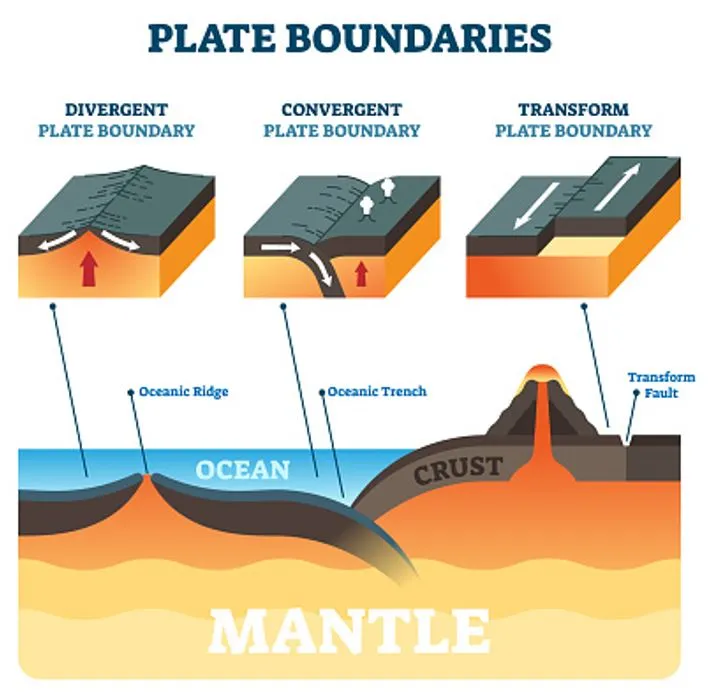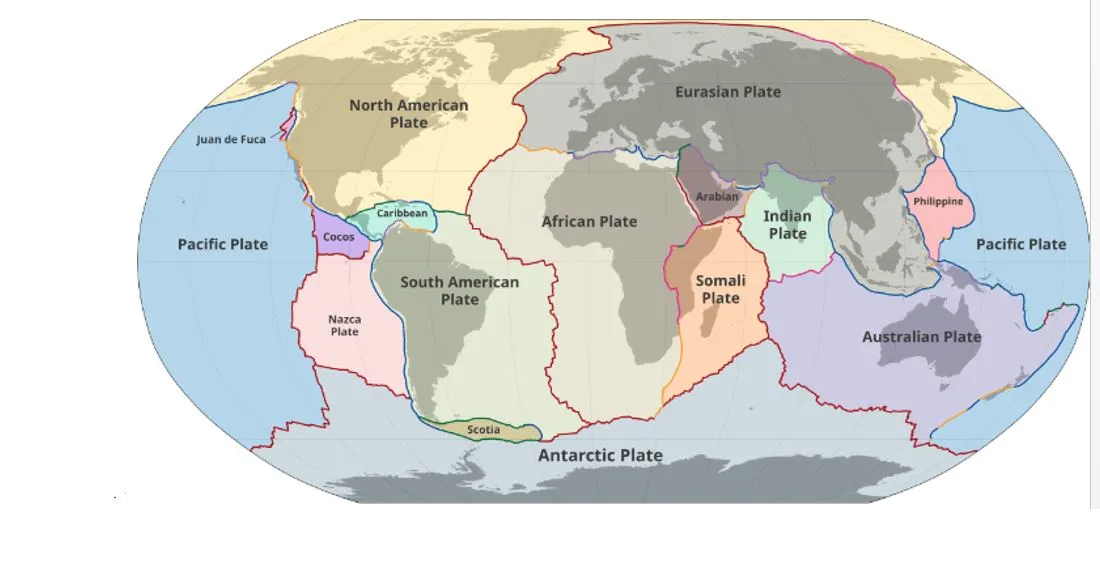

5th November 2024 (12 Topics)
Context
The ongoing tectonic interaction between India and China is not a modern conflict but a natural, ancient process that has been occurring for millions of years. While geopolitical tensions between India and China along the Line of Actual Control (LAC) make headlines, a much slower and continuous struggle is taking place below the Earth's surface. This phenomenon is caused by the movement of tectonic plates, which is leading to the shrinking of the Indian landmass as it slides under the Eurasian or Tibetan plate.
What are Tectonic Plates?
- The Earth’s crust is divided into large sections known as tectonic plates.
- The Indian plate, which once formed part of the supercontinent Gondwanaland, began drifting northward about 60 to 70 million years ago.
- Over millions of years, it moved towards the Eurasian plate (containing present-day China and the Tibetan Plateau).
- This collision resulted in the uplift of the Himalayas and the continuous process of subduction, where the Indian plate is slowly sliding under the Tibetan plate at a rate of 5 to 6 centimeters per year.
- This geological process is referred to as continental drift, which was responsible for the formation of the Himalayan mountain range. The Indian plate is still being squeezed under the Tibetan plate, causing the Himalayas to rise higher each year, including Mount Everest, which continues to grow in height due to this ongoing tectonic activity.
The Ongoing Tug-of-War
- The Indian plate’s constant movement under the Tibetan plate causes significant geological stress, building up over time. This stress is released in the form of
- The Himalayan region, being one of the most tectonically active areas on Earth, is prone to frequent seismic activity.
- Some parts of this region have not experienced a major earthquake in over 500 years, and experts believe a large earthquake is overdue.
- Recent studies show that regions like Hanle in Ladakh are rising slightly due to this tectonic interaction.
- Over the last 25 years, Hanle has moved upwards by around 5 cm and shifted northeastward by 85 cm.
- Monitoring of these movements is done through sophisticated technology such as GPS and satellite tracking, allowing scientists to track the movement of these tectonic plates with high precision.
Implications of the Tectonic Tug-of-War
- Earthquakes and Seismic Activity: As the Indian plate slides under the Eurasian plate, it builds up tension that can cause earthquakes. The stress accumsulated due to this interaction may eventually release, leading to large, potentially catastrophic earthquakes. Given the historical absence of major quakes in some regions, experts warn that the region may be due for a "mega-earthquake."
- Rising Himalayas: The collision between these two plates also results in the constant rising of the Himalayan mountain range. The rate of uplift is approximately 5 mm per year, making the Himalayas one of the youngest and fastest-growing mountain ranges in the world.
- To understand this process more accurately, Indian scientists from the CSIR Fourth Paradigm Institute (CSIR-4PI) have set up high-accuracy reference stations at key locations like Hanle in Ladakh and Bengaluru. Using advanced Global Positioning System (GPS) instruments, they can measure the subtle movements of the land, helping predict seismic risks and better understand the tectonic forces at play.

More Articles


